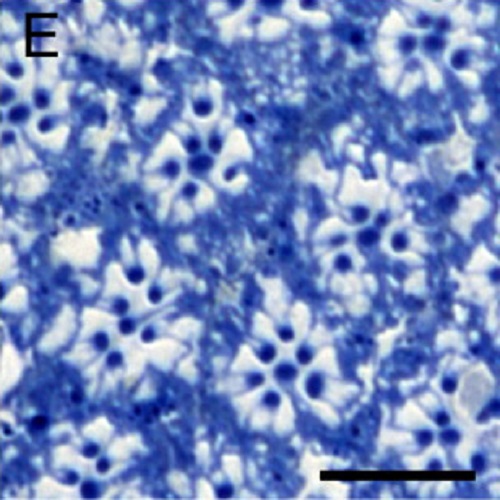Antagonistic functions of two stardust isoforms in Drosophila photoreceptor cells.
Membrane-associated guanylate kinases (MAGUKs) are scaffolding proteins that organize supramolecular protein complexes, thereby partitioning the plasma membrane into spatially and functionally distinct subdomains. Their modular organization is ideally suited to organize protein complexes with cell type- or stage-specific composition, or both. Often more than one MAGUK isoform is expressed by one gene in the same cell, yet very little is known about their individual in vivo functions. Here, we show that two isoforms of Drosophila stardust, Sdt-H (formerly called Sdt-B2) and Sdt-D, which differ in their N terminus, are expressed in adult photoreceptors. Both isoforms associate with Crumbs and PATJ, constituents of the conserved Crumbs-Stardust complex. However, they form distinct complexes, localized at the stalk, a restricted region of the apical plasma membrane. Strikingly, Sdt-H and Sdt-D have antagonistic functions. While Sdt-H overexpression increases stalk membrane length and prevents light-dependent retinal degeneration, Sdt-D overexpression reduces stalk length and enhances light-dependent retinal degeneration. These results suggest that a fine-tuned balance of different Crumbs complexes regulates photoreceptor homeostasis.

- Mol. Biol. Cell 2010 Nov 15;21(22):3915-25
- 2010
- Cell Biology
- 20861315
- PubMed
Enabled by:
